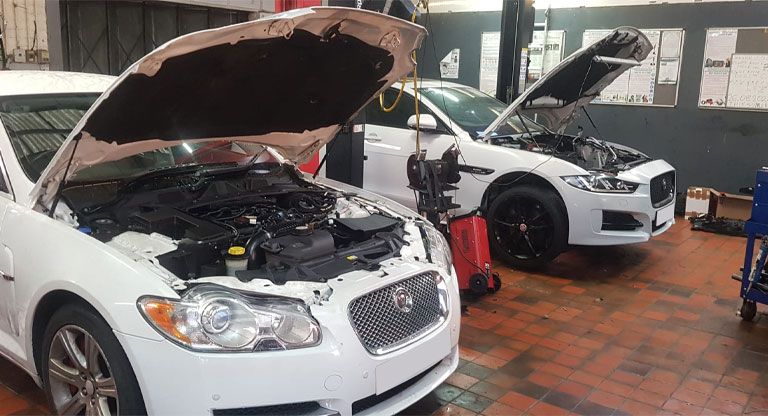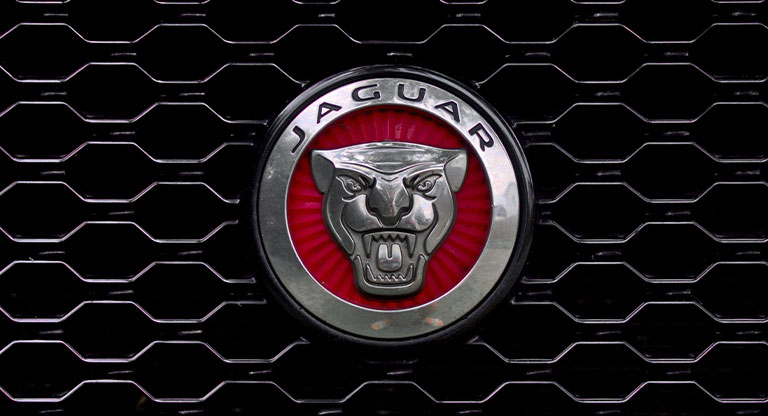- May 30,2023
Guide to Rebuilding a Jaguar Engine: Tips & Upgrades
Are you a Jaguar owner with a passion for reviving classic cars or maximising the performance of your beloved vehicle? Look no further! In this comprehensive guide, we will take you on a thrilling journey through the intricate process of rebuilding a Jaguar engine. From understanding the heart of your car to expert tips and step-by-step instructions, we’ll equip you with the knowledge and skills to tackle this challenging endeavour confidently.
Whether you’re a seasoned mechanic or a curious enthusiast, get ready to unlock the secrets of breathing new life into your Jaguar and unleash its true power on the open road. Let’s dive in and ignite your passion for precision engineering!
Understanding Jaguar Engine
Overview of Jaguar engines
Jaguar engines have a rich history dating back to the 1940s. The six-cylinder XK engine was introduced in 1948 and remained in production for over half a century. It was installed in everything from Le Man’s winners to army tanks. The V12 engine was introduced in 1971 and was mass-produced by Jaguar Cars for a quarter of a century. Jaguar also offers gas and electric engines.
Components of the Jaguar engine
The components of a Jaguar engine vary depending on the model. The six-cylinder XK engine was fitted to Jaguars for around 30 years and was used in various models, including the Mk 7, D-Type, E-Type, and XK150. The V12 engine had a common block design and was mainly produced as 5.3-litre versions but later as 6-litre and 7-litre versions.
Reconditioning the engine’s ancillaries and perishable parts is an important area of rebuilding the engine. Power enhancements can also be made to the engine’s power ranging from 5% to 30%, including digital engine management, large bore exhaust, tuned exhaust, enlarged air inlets, enlarged throttle bodies, revised engine management, revised ignition system, strengthened engine components, revised air intakes, among others.
Steps to Rebuild Jaguar Engine
Rebuilding a Jaguar engine is a meticulous and intricate process that requires careful attention to detail. Here is an expanded explanation of the general steps involved in rebuilding a Jaguar engine:
Disassembling the engine:
The first step is carefully disassembling the engine by removing various components. This typically includes detaching the cylinder head, crankshaft, pistons, connecting rods, timing chain, camshafts, and other parts.
Following the manufacturer’s guidelines or a reputable engine rebuild manual is essential to ensure proper disassembly.
Cleaning the parts:
Once the engine components are removed, they must be thoroughly cleaned to remove any accumulated dirt, oil, carbon deposits, or rust. This is crucial to ensure the engine operates efficiently and facilitates accurate inspections. Depending on the parts and condition, various cleaning methods include chemical cleaning, hot tanking, ultrasonic cleaning, and hand scrubbing with specialised brushes.
Inspecting the parts:
After cleaning, each part should be meticulously inspected for signs of damage, wear, or any abnormalities. This includes examining the cylinder walls, pistons, valves, bearings, crankshaft, timing components, and other critical engine elements. Precision measuring tools, such as micrometres and bore gauges, are essential to assess dimensions and tolerances accurately.
Cracks, warping, excessive wear, or any other issues should be identified during this inspection phase.
Replacing worn-out parts:
Any parts found damaged, excessively worn, or beyond their service limits should be replaced. This includes pistons, piston rings, connecting rod bearings, main bearings, gaskets, seals, valves, valve springs, and timing components. It’s vital to use genuine or high-quality aftermarket parts that meet the manufacturer’s specifications for optimal performance and longevity.
Reassembling the engine:
Once all the necessary parts have been cleaned, inspected, and replaced, it’s time to reassemble the engine. This process involves carefully fitting the components according to the manufacturer’s specifications and torque settings. Lubrication is crucial during reassembly to ensure proper functioning and minimise wear during initial startup.
Attention should be given to the appropriate alignment of timing components, torquing of fasteners, and installation of new gaskets and seals.
Testing and tuning:
After the engine is reassembled, it should undergo a series of tests to ensure everything functions correctly. This may include a compression test, leak-down test, and checking for oil pressure and coolant flow. Once the initial tests are completed successfully, the engine may require tuning, adjustments, and fine-tuning to optimise performance. This may involve setting the ignition timing, adjusting the fuel mixture, and calibrating sensors and other engine management systems.
Remember, rebuilding a Jaguar engine requires specialised knowledge and skills. If you are not experienced in engine rebuilding, it is recommended to seek professional assistance or guidance throughout the process. This will help ensure the highest quality of workmanship and increase the chances of a successful engine rebuild.
Tips for successful rebuilding of a Jaguar engine

Use high-quality parts
When rebuilding a Jaguar engine, it is essential to use high-quality replacement parts. Genuine OEM or reputable aftermarket parts that meet the manufacturer’s specifications should be used. This ensures proper fitment, performance, and longevity of the engine components. Follow the manufacturer’s instructions.
Take your time and pay attention to the detail.
Rebuilding a Jaguar engine requires patience and meticulous attention to detail. Rushing through the process or overlooking critical steps can lead to later errors or problems. Carefully clean and inspect each component, double-check torque settings, and ensure proper alignment during reassembly.
Keep a clean and organised workspace.
Maintaining a clean and organised workspace is crucial during the engine rebuilding process. It helps prevent the loss of small parts, avoids contamination, and allows easier access to tools and components. Use trays, bins, and labelling systems to keep parts organised and take precautions to prevent foreign objects from entering the engine.
Document and label components
As you disassemble the engine, take pictures or make diagrams to document the arrangement of components and their connections. This will be helpful during reassembly, ensuring that everything is correctly installed. Labelling or bagging parts as you remove them also helps avoid confusion and ensures that the correct parts are replaced during rebuilding.
Perform thorough cleaning and inspections.
Cleaning the engine components is critical in removing dirt, grime, and contaminants. Ensure thorough cleaning of all parts, paying attention to oil passages and small crevices. Perform detailed inspections after cleaning to identify any signs of wear, damage, or potential issues that may require replacement or further attention.
Test and verify before final assembly
Before completing the engine reassembly, perform tests and verifications to ensure proper functionality. This can include checking the clearance of moving parts, verifying timing marks, and conducting leak-down tests. Address any issues or discrepancies before proceeding with the final assembly.
Seek professional help if needed.
Rebuilding an engine can be complex and challenging, especially for those without experience. If you are not confident in your abilities or encounter difficulties during the process, it is you should assistance from professional mechanics or engine rebuild specialists. They can provide expertise and guidance and ensure the engine is rebuilt to the highest standards.
Rebuilding a Jaguar engine requires careful planning, precision, and adherence to best practices. Following these tips can increase the chances of a successful engine rebuild and help ensure your Jaguar engine’s optimal performance and longevity.
Options for Upgrading Your Jaguar Engine:
Upgrading your Jaguar engine can be an exciting endeavour, offering the opportunity to enhance your vehicle’s performance, power, and overall driving experience. Several options are available for upgrading a Jaguar engine, each with benefits and considerations. Let’s explore the options and advantages of upgrading your Jaguar engine:
Options for upgrading your Jaguar engine:
Performance tuning
Performance tuning involves optimising the engine’s parameters, such as fuel delivery, ignition timing, and airflow, to improve power and responsiveness. This can be achieved through various methods, including remapping the engine control unit (ECU), installing performance chips, or using standalone engine management systems. Performance tuning can increase horsepower and torque and improve throttle response.
Supercharging or turbocharging
Supercharging and turbocharging are forced induction methods that significantly increase the engine’s power output. These systems compress the incoming air, allowing more fuel to be burned and generating more power. Superchargers are belt-driven, while turbochargers use exhaust gases to drive a turbine. Both options can provide substantial power gains, giving your Jaguar a significant performance boost.
Engine displacement increase
Increasing the engine displacement involves enlarging the engine’s cylinder bore or stroke to create a larger combustion chamber. This modification allows more air and fuel to be burned, increasing power output. Engine displacement increases can be achieved through engine boring, stroker kits, or engine swaps with larger-displacement units.
Performance exhaust system:
Installing a performance exhaust system can improve engine performance by reducing exhaust restrictions and enhancing exhaust gas flow. These systems typically feature larger-diameter pipes, high-flow catalytic converters, and less restrictive mufflers. The improved exhaust flow can lead to power gains, a more aggressive exhaust note, and reduced back pressure.
Benefits of upgrading your Jaguar engine:
Increased horsepower and torque
Upgrading your Jaguar engine can provide significant increases in horsepower and torque. This results in improved acceleration, higher top speeds, and enhanced overall performance. Whether seeking a thrilling driving experience or improved track performance, an upgraded engine can deliver your desired power.
Enhanced throttle response
Upgrading your Jaguar engine can improve throttle response, meaning the engine will respond more quickly and precisely to your inputs. This translates into a more engaging and dynamic driving experience, allowing you to accelerate and manoeuvre with greater control and precision.
Improved fuel efficiency
While some engine upgrades focus primarily on performance gains, specific modifications, such as performance tuning, can also optimise fuel efficiency. By fine-tuning the engine parameters, you can better balance power and fuel consumption, potentially improving your Jaguar’s fuel economy.
Customisation and personalisation
Upgrading your Jaguar engine allows you to tailor your vehicle’s performance characteristics to your preferences. You can choose the specific upgrades that align with your driving style and goals, creating a personalised driving experience that suits your needs.
Increased resale value
Upgrading your Jaguar engine with high-quality modifications can enhance the resale value of your vehicle. A well-executed engine upgrade that improves performance and reliability can attract potential buyers who value a higher-performing vehicle.
Conclusion
Rebuilding and upgrading a Jaguar engine is vital for enthusiasts seeking to enhance performance, optimise reliability, and personalise their driving experience. Following meticulous steps, using high-quality parts, and seeking professional assistance, the engine can be restored to its full potential or transformed into a high-performance powerhouse.
Whether rebuilding for restoration purposes or upgrading for exhilaration, investing in your Jaguar engine ensures long-term satisfaction and enjoyment.

